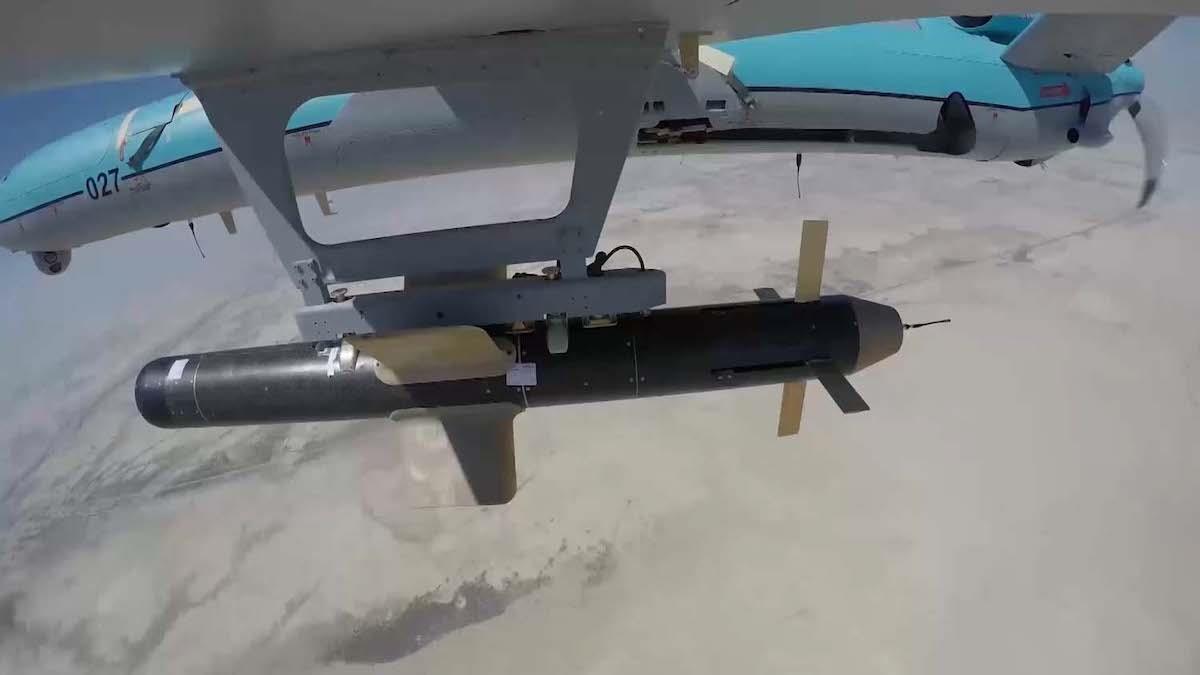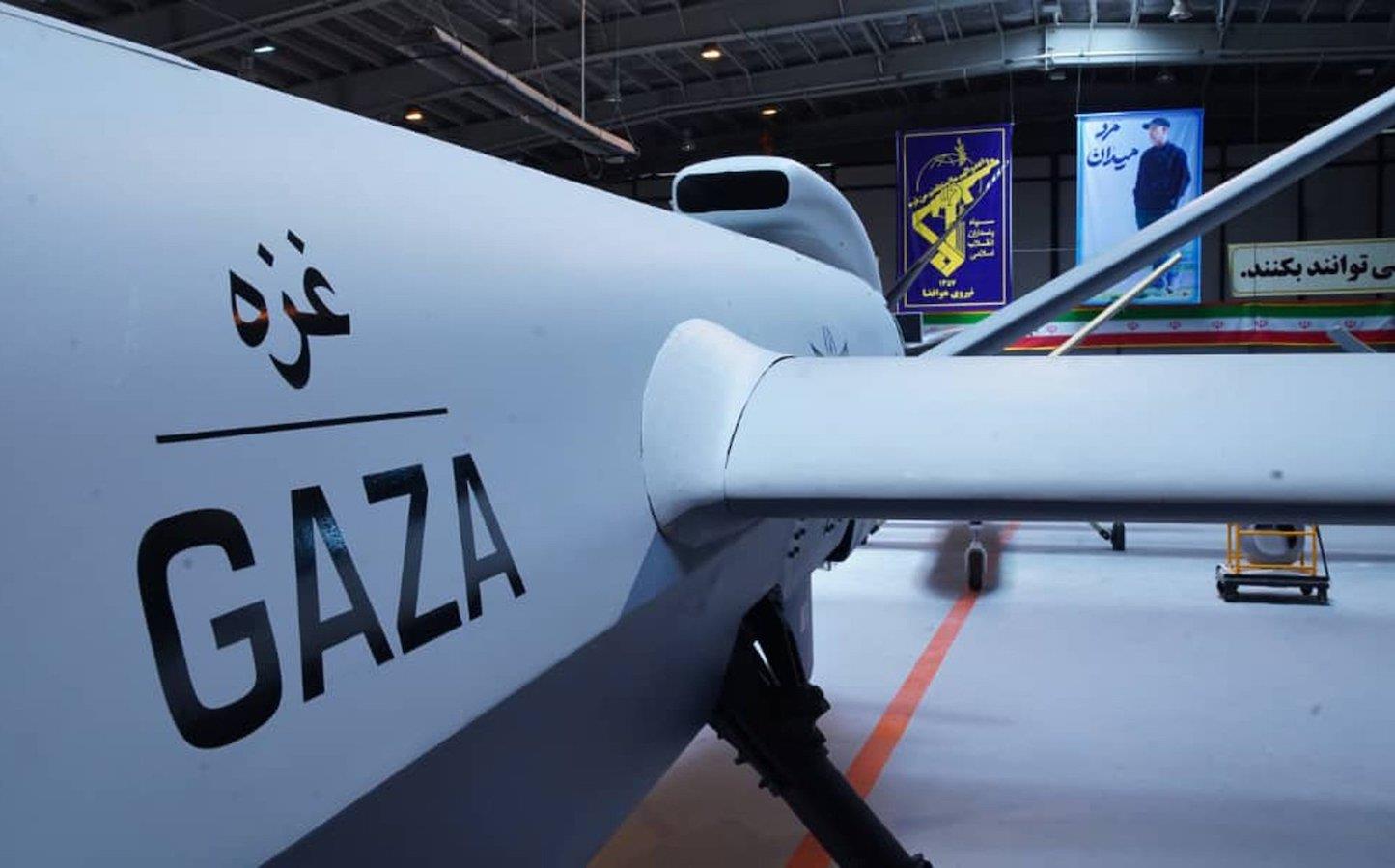(MENAFN- Asia Times)
Iran unveiled a drone factory in Tajikistan this month with the stated aim of increasing defense cooperation between the two countries.
The factory in Dushanbe was built with the assistance of specialists from the Iranian Ministry of Defense and will produce the Iranian Ababil-2 drone. The Ababil-2 is a low-cost tactical drone designed for reconnaissance, surveillance and attack missions.
It has a range of 200 kilometers and a one-and-a-half-hour endurance.
The Ababil series of drones were designed and used during the later stages of the 1980-1988 Iran-Iraq War. The Ababil-1 could carry 40 kilograms of explosives and was considered expendable, while the more advanced Ababil-2 was first unveiled in 1999 with basic surveillance capabilities, but could also be used as a loitering munition and as a target drone.
Iran's drone program has grown considerably since it unveiled the first-generation Ababil drones.“We are in a position to apart from meeting our domestic need, we can export military equipment to allied and friendly countries to help increase security and sustainable peace,” said Iranian Chief of Staff Major General Mohammad Bagheri during the factory's opening ceremony.
It is not clear what Iran or Tajikistan's intentions are with this new drone factory. However, Iran's move to establish a drone factory in Tajikistan may be due to its need to shield its drone factories from attack, export its drones legitimately, escape international isolation and increase its military footprint in Central Asia.
Iran's drone factories are a priority target for Israel, as these facilities produce drones for Iran's regional proxies. It is estimated that Hezbollah, an Iranian proxy militia based in Lebanon, has an arsenal of 2,000 drones , including advanced Iranian models such as the Mohajer, Shahed, Samed, Karrar and Saegheh types.
Apart from Hezbollah, Iran has also supplied Houthi rebels in Yemen with Qasef-1 suicide drones to target Patriot missile batteries operated by Saudi-led coalition forces.

An Iranian Simorgh drone carrying a weapon during the second day of a military exercise in the Gulf, near the strategic strait of Hormuz in southern Iran. Photo: AFP / Iranian Army office
Israel hits factory
In response to Iran's efforts to arm its proxies with drones, Israel has struck at Iranian drone factories to halt the flow of these weapons. In February, Israel destroyed an Iranian drone factory at Erbil in Iraq near the city of Kermanshah in Iran, with the Israeli intelligence operatives who launched the strike being based in Iraq.
According to an anonymous senior intelligence official, six suicide quadcopter drones exploded inside the facility, which was Iran's main manufacturing and storage plant for military drones, destroying dozens of them.
Iran's move to establish a drone factory in Tajikistan may be an effort to move these critical facilities out of reach of an enemy attack.
Iran may also want to sell its drones to foreign customers to legitimize its drone industry. As the UN arms embargo on Iran expired in October 2020, it is now possible for Iran to sell and purchase weapons openly.
This enables Iran to normalize its sales of military equipment, compared with its previous practice of using underhanded means. Iran has also expressed a willingness to sell weapons rather than buy them, with Iranian Defense Minister Amir Hatami stating that a number of countries have contacted Iran about potential weapons purchases, with Syria Iraq, and Sudan having already purchased weapons from Iran.
Drones, especially loitering munitions, are among the items that Iran may offer to potential customers. Notably, Russia has expressed an interest in purchasing Iran's drones , although it is likely that Russia will push for licensed production.
Iran's new factory in Tajikistan may produce drones for the Central Asian defense market, providing an alternative to the Chinese-made drones used by Kazakhstan, Turkmenistan and Uzbekistan. It is plausible that Iran aims to increase its footprint in Central Asia through drone sales to regional states.

Iran's 'Gaza' drone is a game-changer. Photo: Sepahnews / Twitter
Technology at risk
However, by selling drones Iran runs the risk of its adversaries getting a hold of its drone technology. Israel, Saudi Arabia and the US might indirectly get a hold of Iranian drone technology through covert means, enabling the development of counter-measures.
Also, as drones are relatively cheap and expendable weapons systems, they may not bring Iran as much income as it hopes for.
Iran's move to establish a factory in Tajikistan may also be part of its efforts to escape its international isolation through drone diplomacy, which allows it to bypass international sanctions, and at the same time build new partnerships with client states.
Undoubtedly, Iran's establishment of a drone factory in Tajikistan establishes a high-level government-to-government partnership in terms of spare parts, munitions, training, maintenance and other technical assistance, which Iran may replicate with future partner states.
The overt unveiling of Iran's new drone factory in Tajikistan may also be a thinly-veiled warning against the Taliban.
Since the Taliban's rise to power last year, border skirmishes between Taliban fighters and Iranian border guards have intensified. So Iran's establishment of a drone factory in Tajikistan could be interpreted as an attempt to balance off against a resurgent Taliban holding power in Afghanistan.
MENAFN20052022000159011032ID1104245506
Legal Disclaimer:
MENAFN provides the information “as is” without warranty of any kind. We do not accept any responsibility or liability for the accuracy, content, images, videos, licenses, completeness, legality, or reliability of the information contained in this article. If you have any complaints or copyright issues related to this article, kindly contact the provider above.